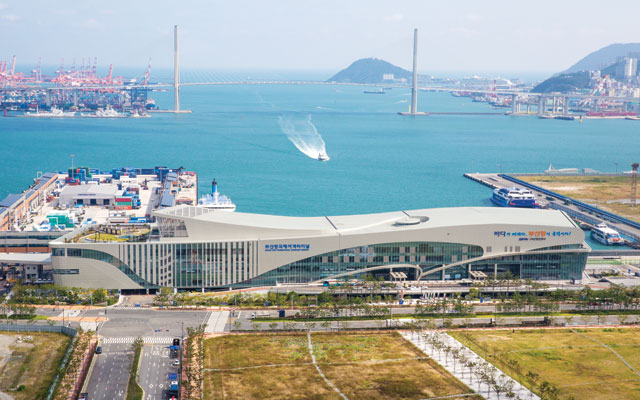Massive city developments are underway and being planned for Seoul and Busan, and they will benefit the events industry.
Two of South Korea’s most populous cities, Seoul and Busan, have massive infrastructure development plans up their sleeves to further grow their ability to welcome more leisure and business travellers far into the future.
In Seoul where Coex – the city’s most prominent convention and exhibition centre – is operating at close to full capacity year-round, plans are are being worked out to redevelop the 720,000m2 plot of land between Coex and Jamsil Sports Complex into a single, massive Coex Center Jamsil which will house a new convention centre, hotels, and shopping and entertainment facilities.

The project, undertaken by Korea International Trade Association (KITA), the owners of Coex, will also see renovations to Jamsil Sports Complex to enable it to support large-scale business events.
However, with Coex Center Jamsil expected to only be ready in 2030, Coex’s current solution for the space crunch is to “work with customers to find alternative event dates or offer a mix of spaces that can fit their needs”, according to MJ Cho, manager of Coex’s venue sales team.
She shared that occasional events that cannot be accommodated at Coex are directed to aT Center, which is also owned by KITA.
Cho also revealed that her team has developed a ranking system to determine which bookings to accept.
“We look at the number of times the show has been held at Coex, its size, its history, etc, to make that decision. Simply put, shows loyal to Coex get priority. However, international exhibitions and conventions overtake them all, especially if the events are beneficial to the national economy,” she added.
Another immediate solution to the space crunch is improved use of the venue’s existing space. A recent renovation transformed all its meeting rooms on level two into a more popular square space from its previous round shape.
“Round rooms are good to look at but difficult to use. Ever since we’ve relaunched the square meeting rooms, demand and bookings have risen,” she said.
Also new to the meeting rooms are fingerprint door locks which let registered organisers in, and in-room cameras that allow people outside to see what’s happening behind closed doors, thereby minimising disruptions. These are features requested for by many planners, according to Cho.
At the southern end of South Korea, Busan has kicked of two of three massive city developments which “make up Busan’s next-stage tourism growth”, said Yoon Joong Hwa, convention marketing manager, Busan Tourism Organization, Convention Bureau.
The first is the East Busan Tourism Complex in Busan’s Gijang district. Spanning 365 hectares, the East Busan Tourism Complex – also known as OSIRIA – is positioned as Busan’s new luxury tourism enclave.
Hilton Busan and Ananti Cove are the first in the complex to welcome guests.
Opened in July 2017, the five-star Hilton Busan sits on the water’s edge, featuring both leisure and event facilities. In barely a year, the hotel has drawn strong demand from holidaying families and couples as well as luxury product launches and residential meetings hosted by corporations and associations.
A hotel spokesperson opined that the hotel’s vast open spaces – many of them offering ocean views – are perfect for teambuilding activities, and the hotel’s in-house events team is able to tailor a suitable programme for residential meeting groups.
The adjoining Ananti Cove features a cluster of F&B outlets and trendy boutiques, offering supplementary recreational and dining options for hotel guests.
Come 2019, the tourism complex will debut a large-scale shopping mall with premium outlets, shared Yoon, adding that other facilities in the pipeline are a golf course and club, a water park and “possibly another hotel”. All facilities are projected to be in place by end of 2020.
“This luxury tourism district has been planned in the east because it is located close to the convention district, where the Busan Exhibition and Convention Center (Bexco) and Busan Cinema Centre are, as well as our famous beaches like Gwangalli, Haeundae and Songdo.
It is a good complement to Busan’s business and leisure tourism offerings,” said Yoon, adding that a development of similar scale is no longer possible in the built-up city centre.
Another work-in-progress is the North Port Redevelopment Project.
Several container ports and logistic companies once located in Busan’s North Port have been relocated to the New Busan Port in the west, freeing up space to take in a future waterfront park, passenger port facilities and commercial buildings.
“There are plans to have an integrated resort, complete with casinos, a convention centre and hotels, in the future North Port. This project makes sense because it enjoys a prime location being very close to the old city centre, as well as the Busan KTX station,” said Yoon.
Currently, according to Yoon, “roads, harbour and wharf are all done” and construction of buildings could begin next year.
Busan’s third and final development project lies in the west, an area that has been earmarked to support the city’s bid for World Expo 2030.
While the project is still in the early-stages of planning, with approval from the government obtained only last year, Yoon is able to say that the area will be built for “MICE, residential and city administrative purposes”.
“The west may also have a convention and exhibition centre to supplement Bexco in the city centre and Busan Port International Terminal Exhibition & Convention Center (opened 2015) in the new North Port. With this, Busan will offer three major convention and exhibition venues, which will make the destination very convenient and attractive for business and association events,” he said.
This article was first published on TTGmice August 2018





















